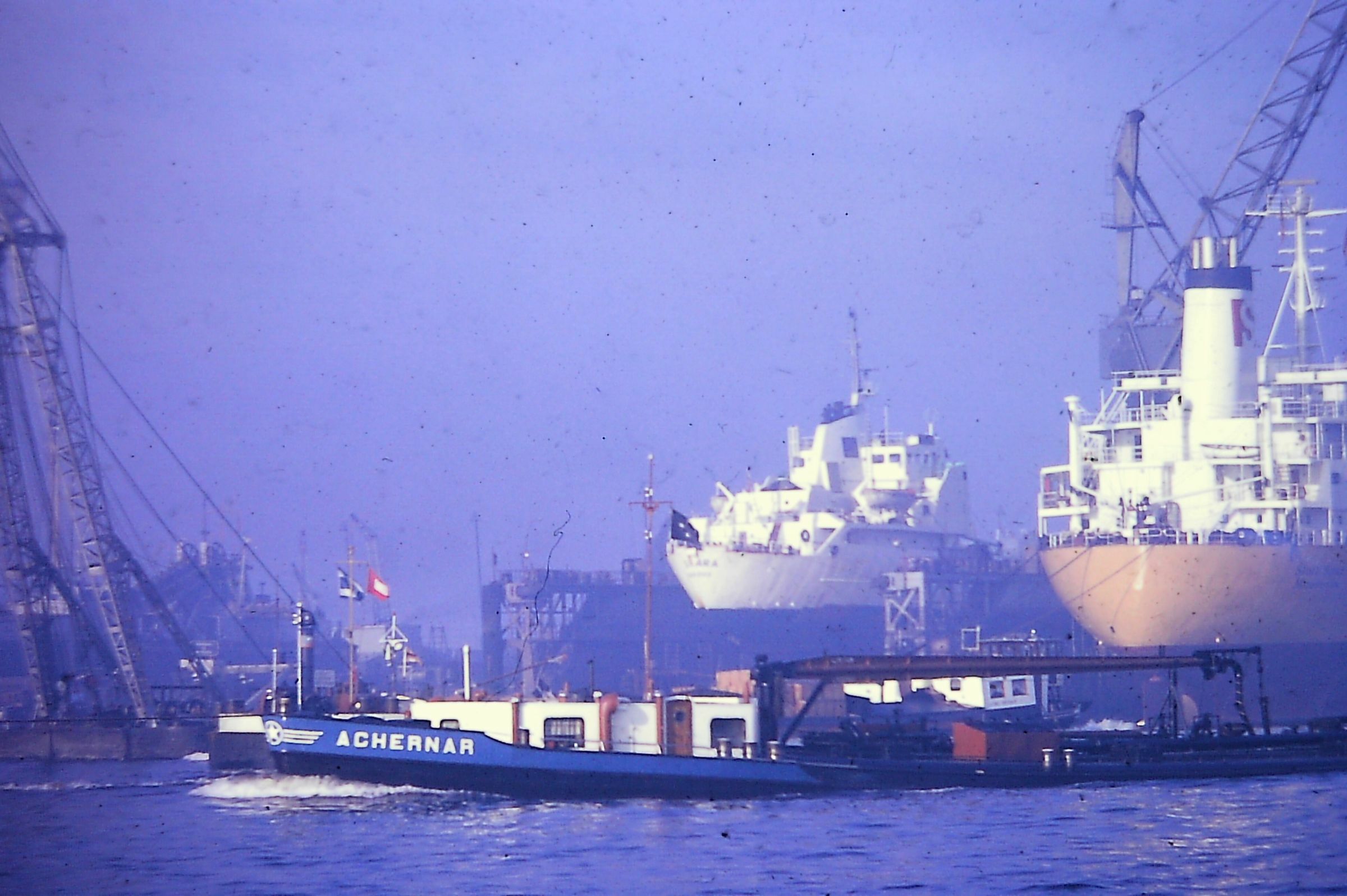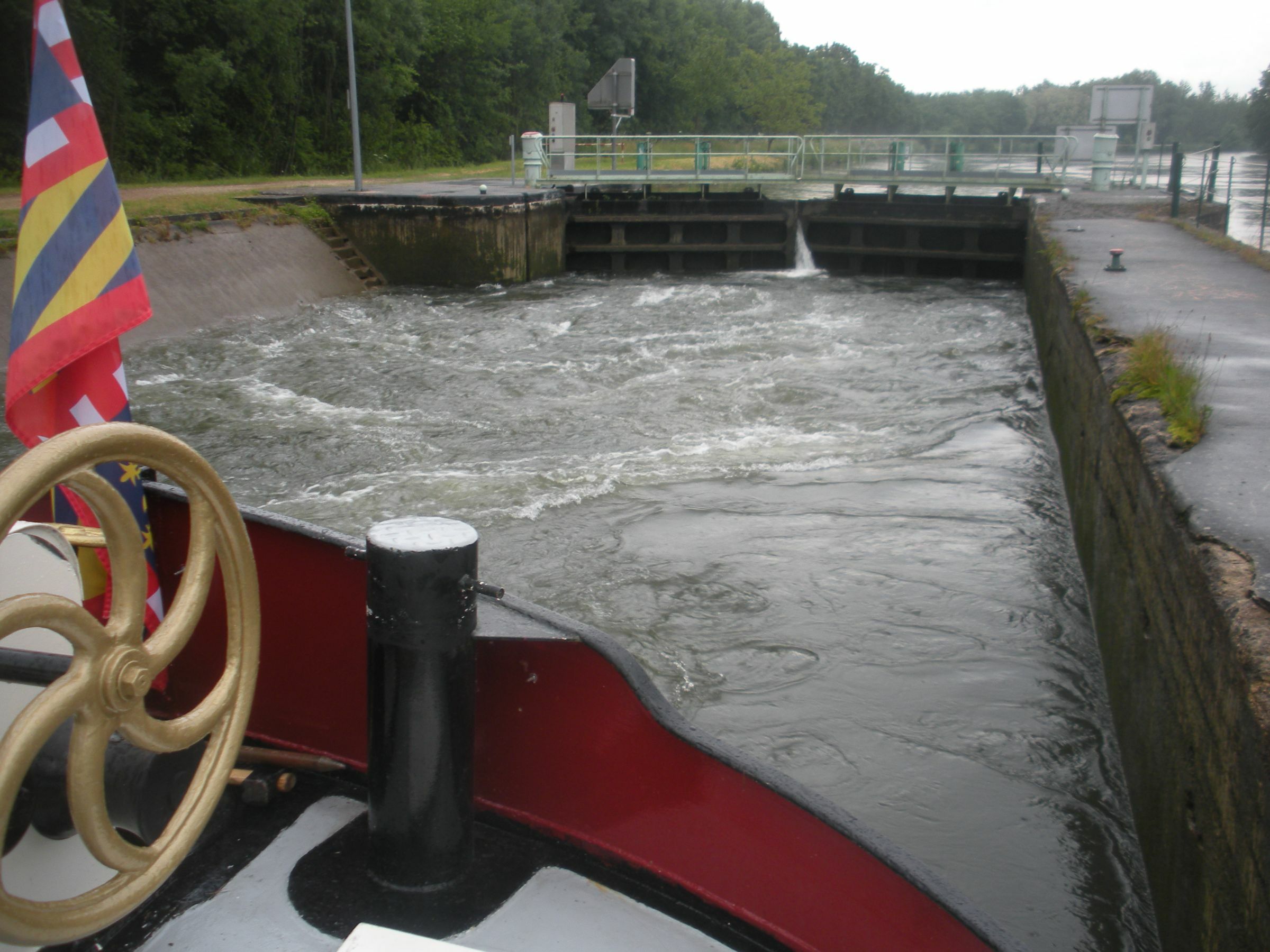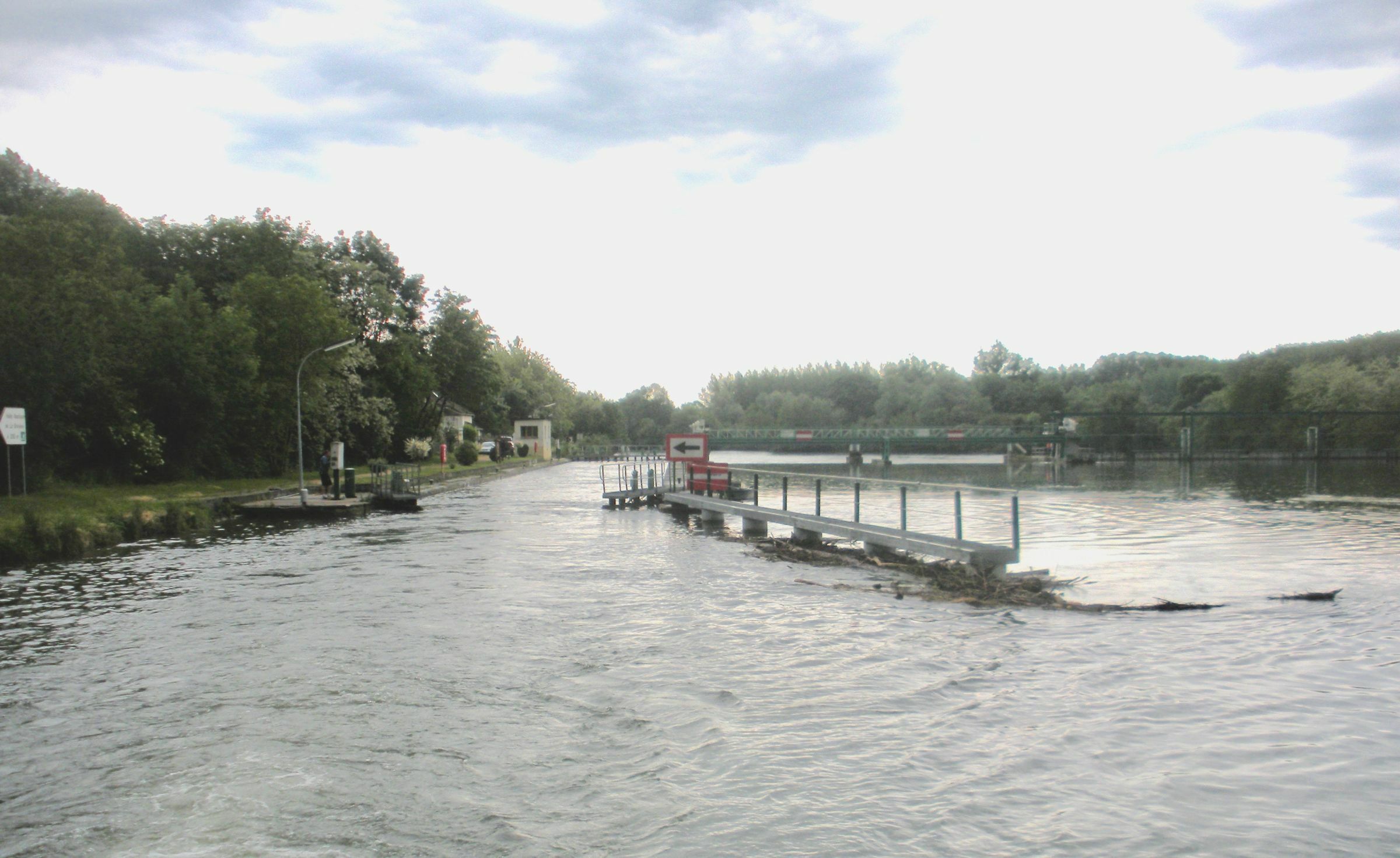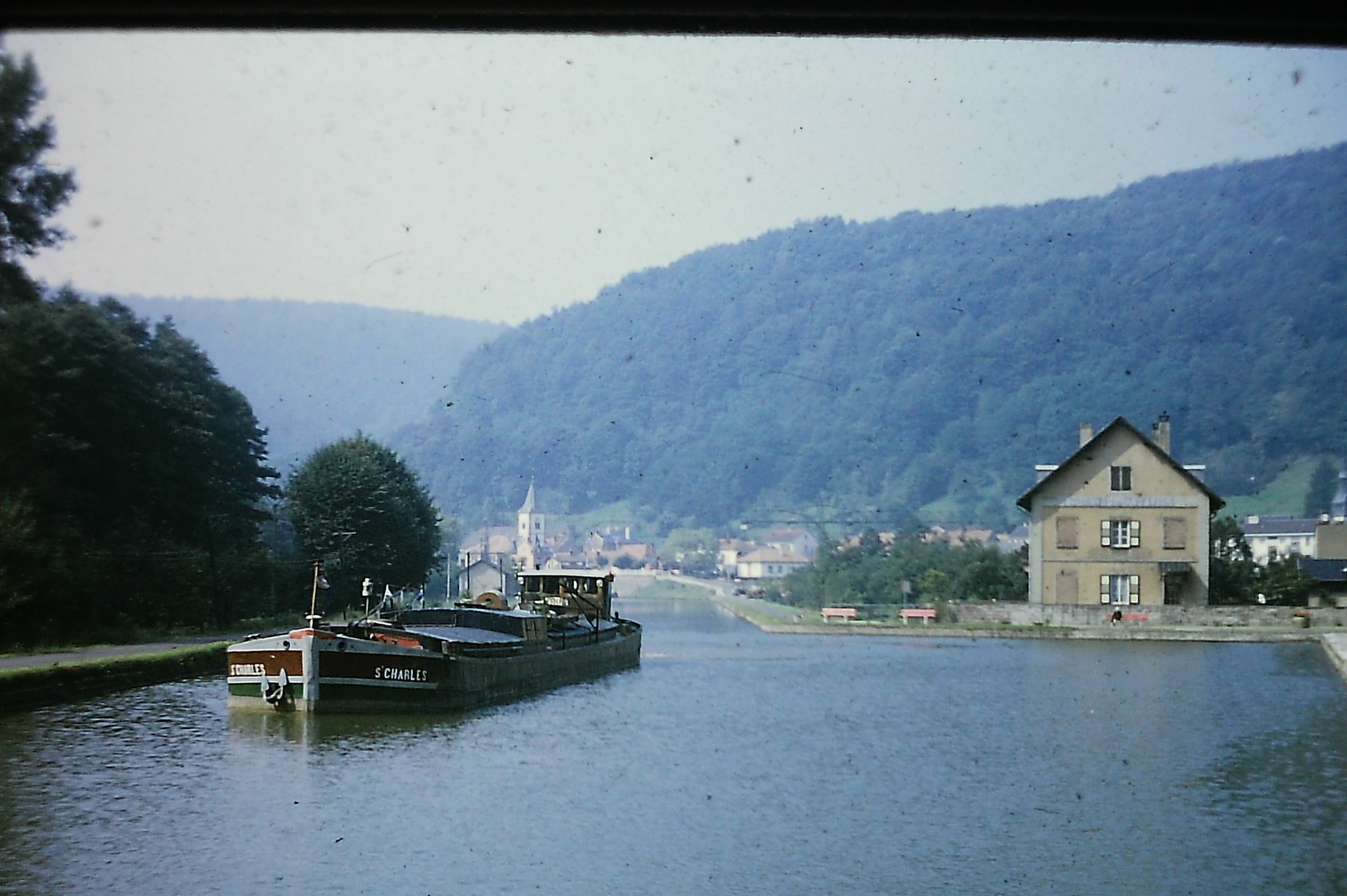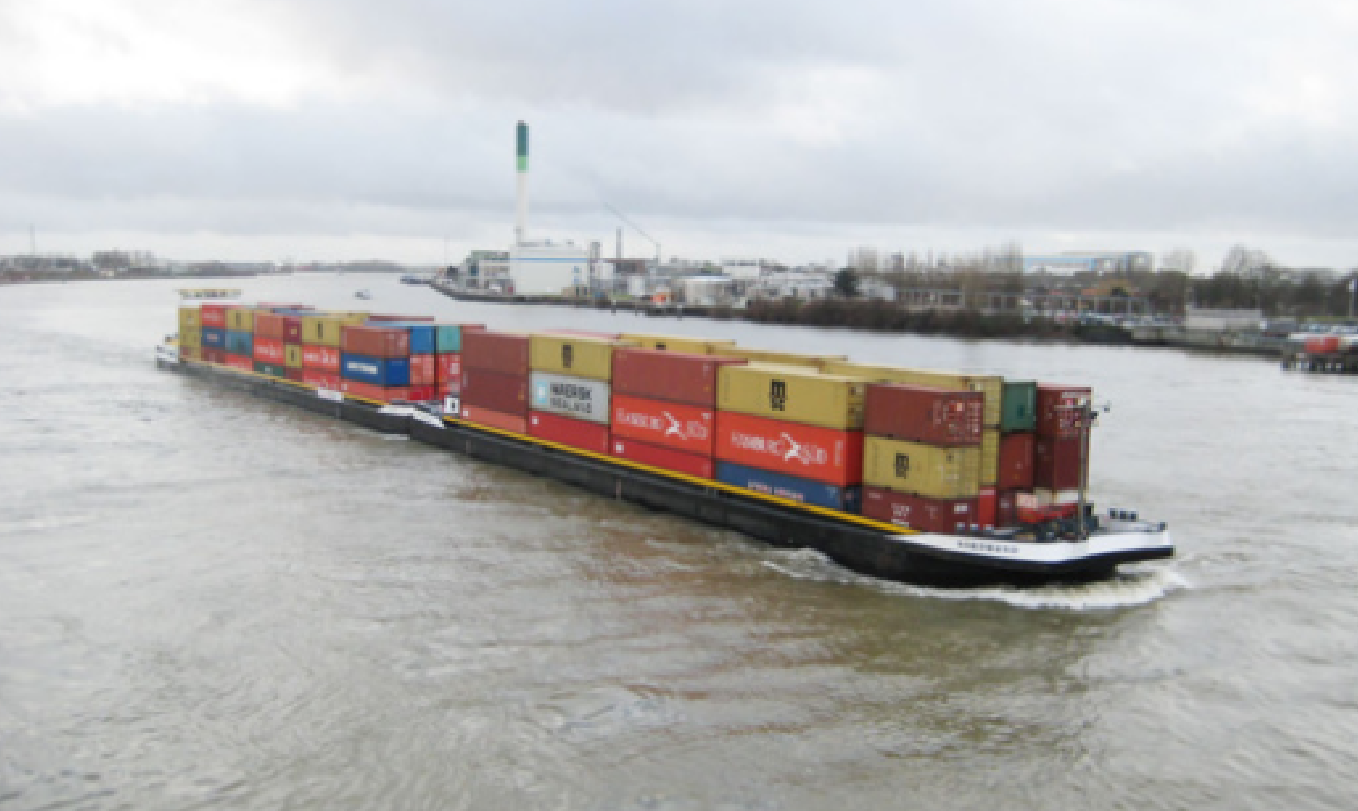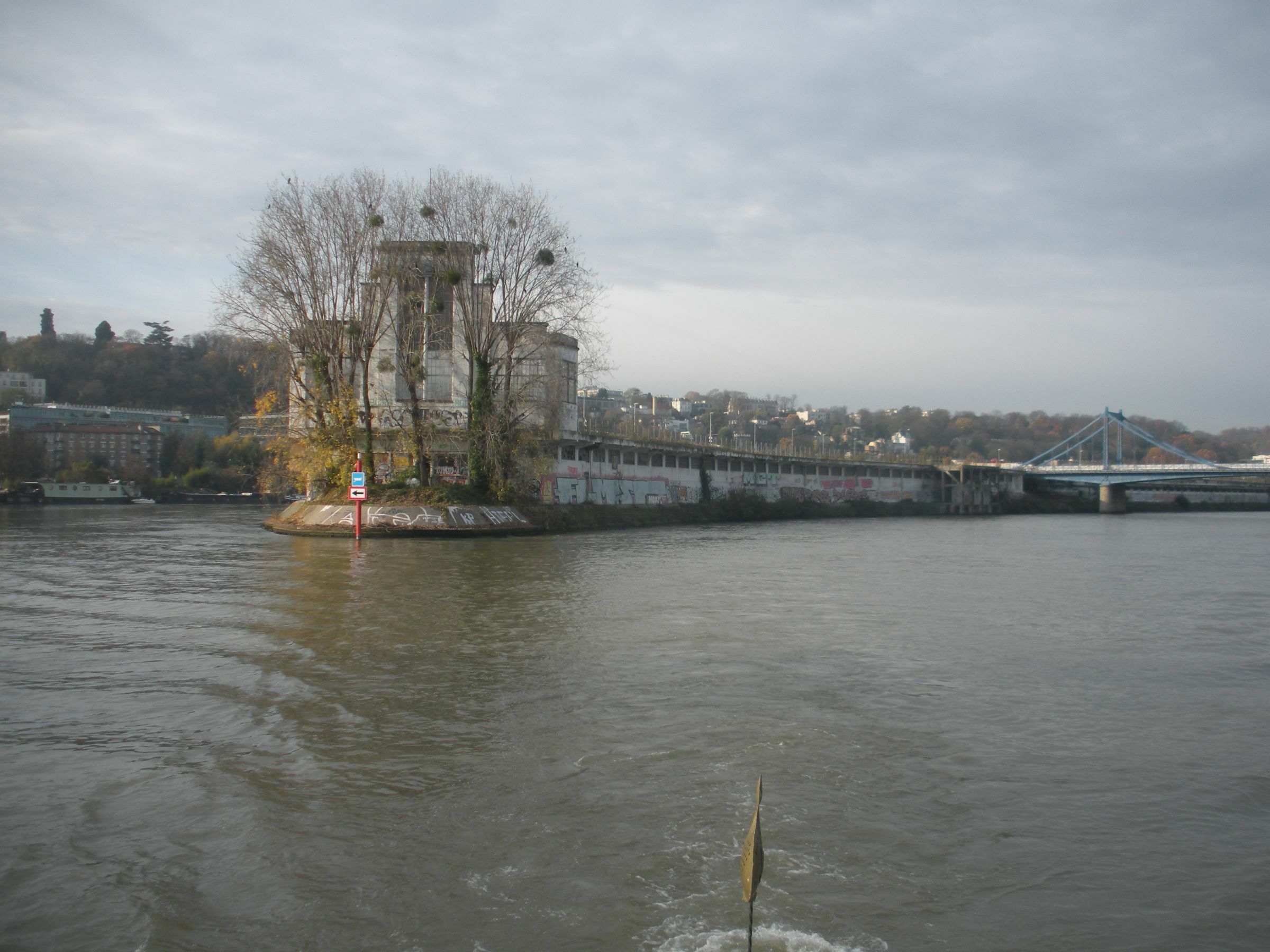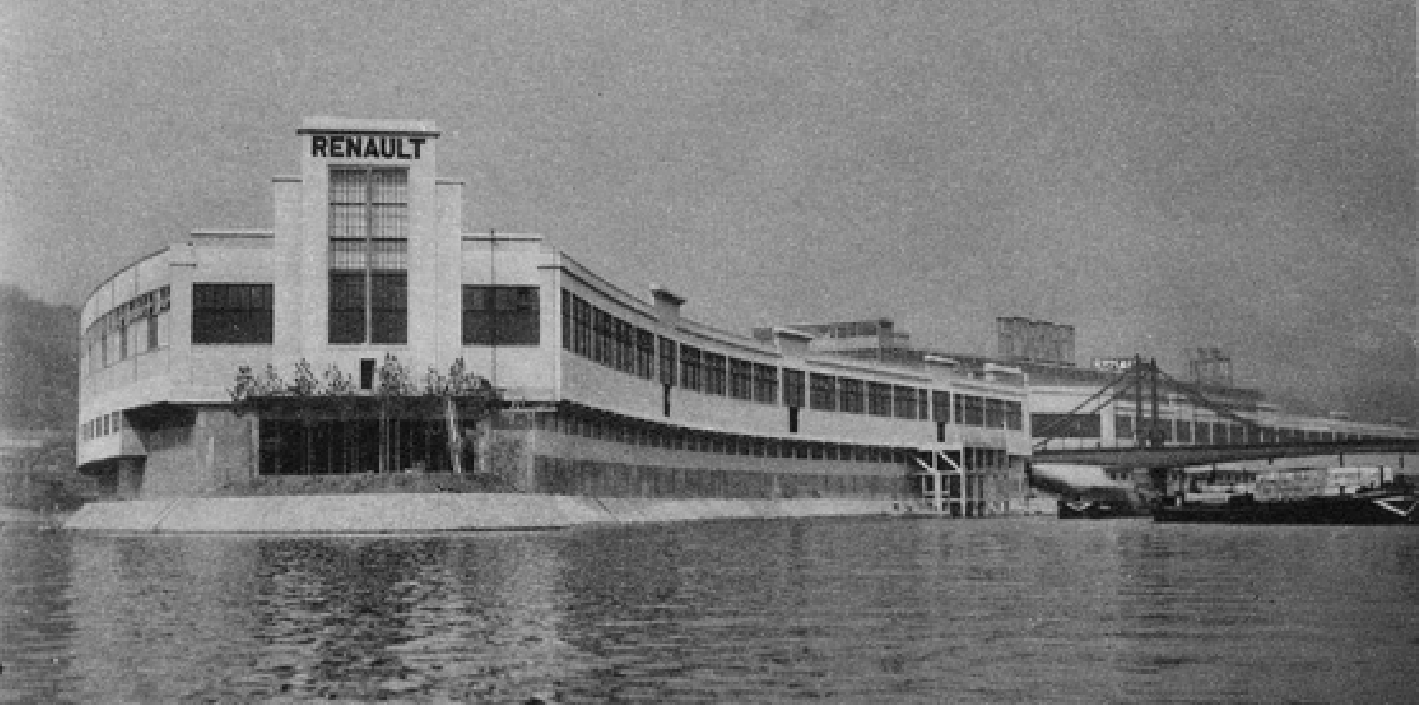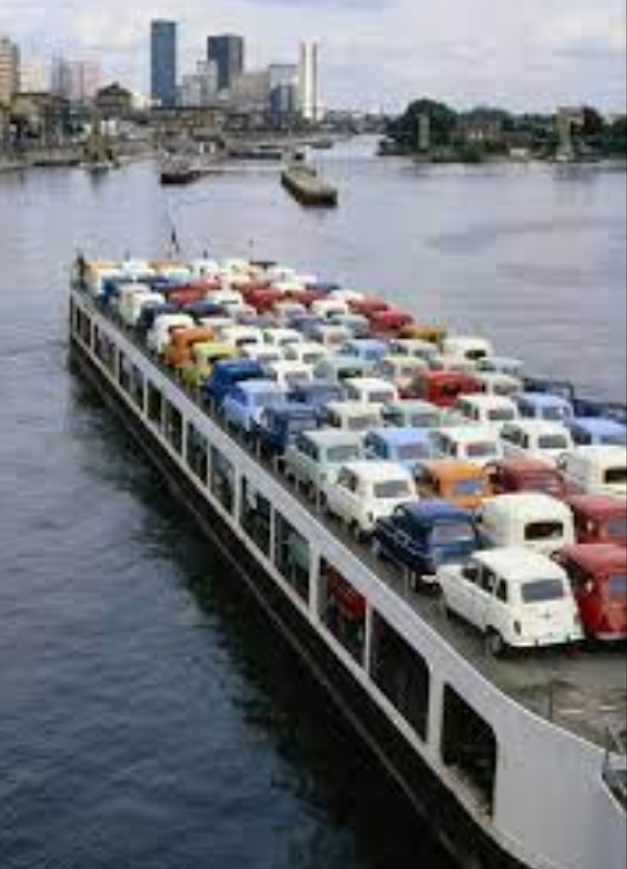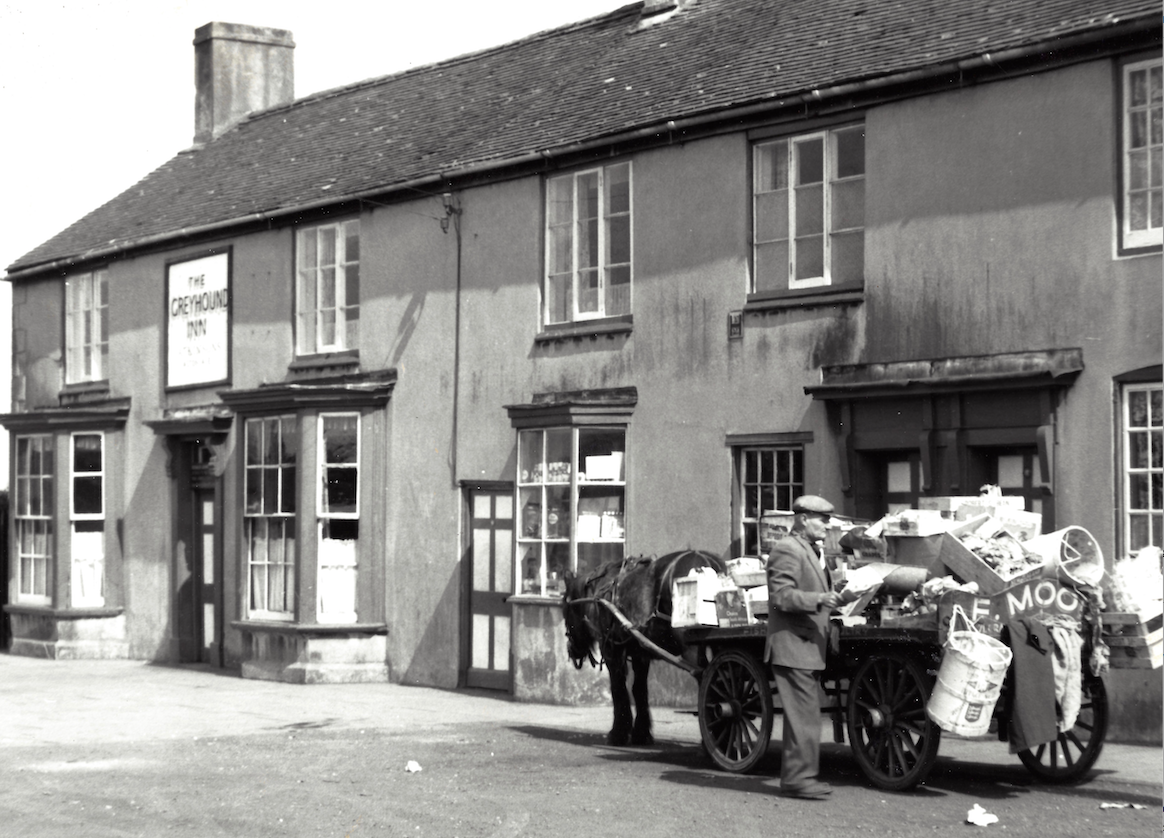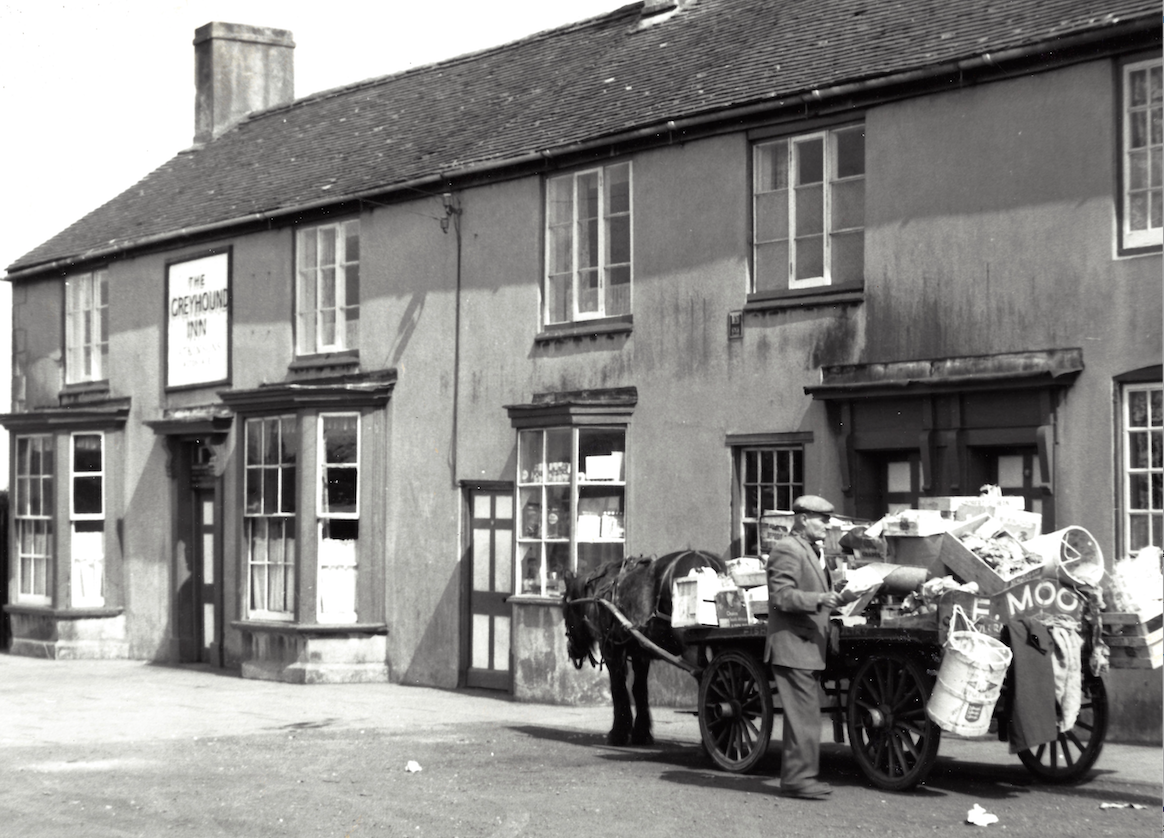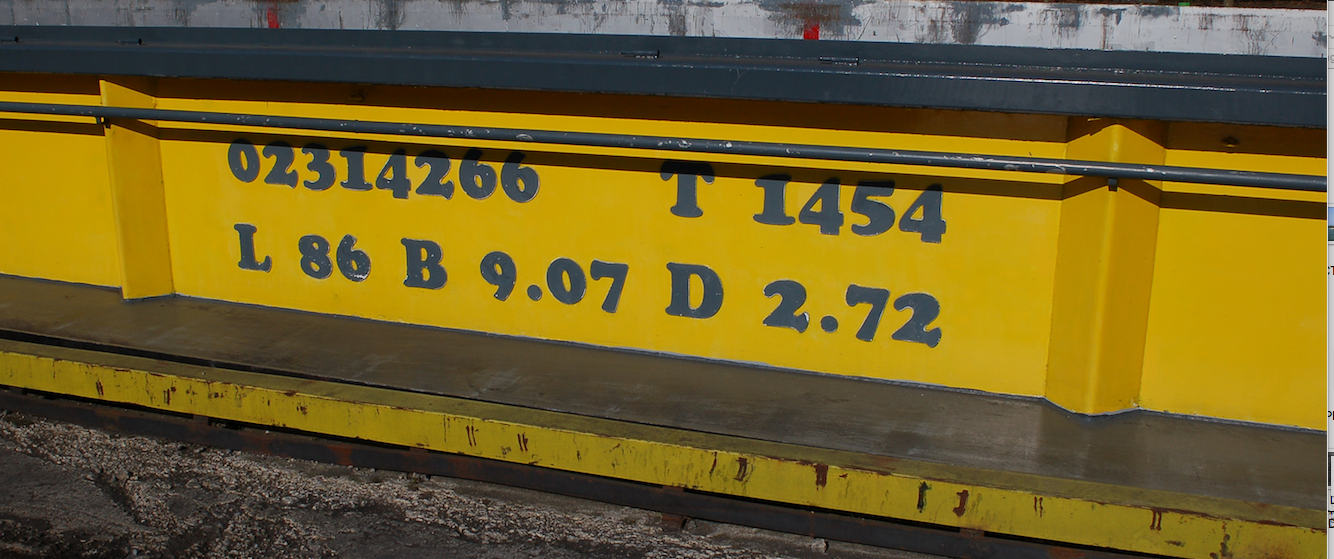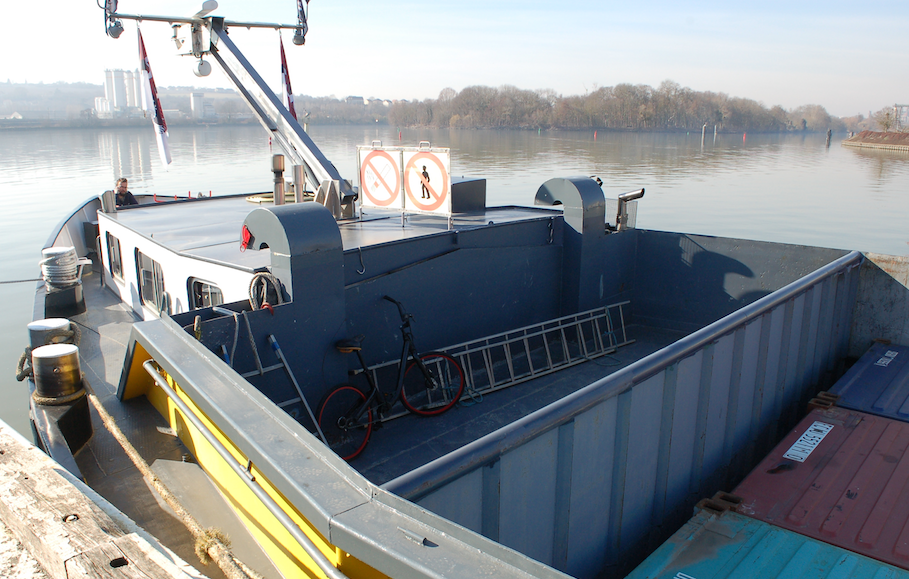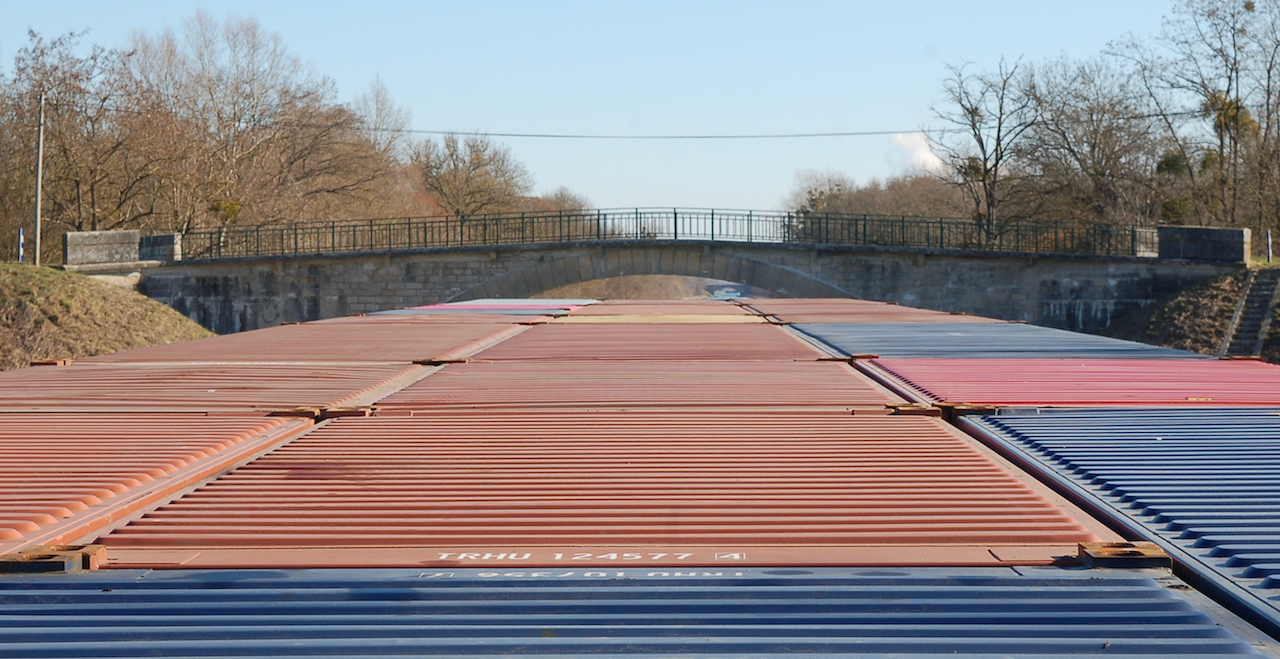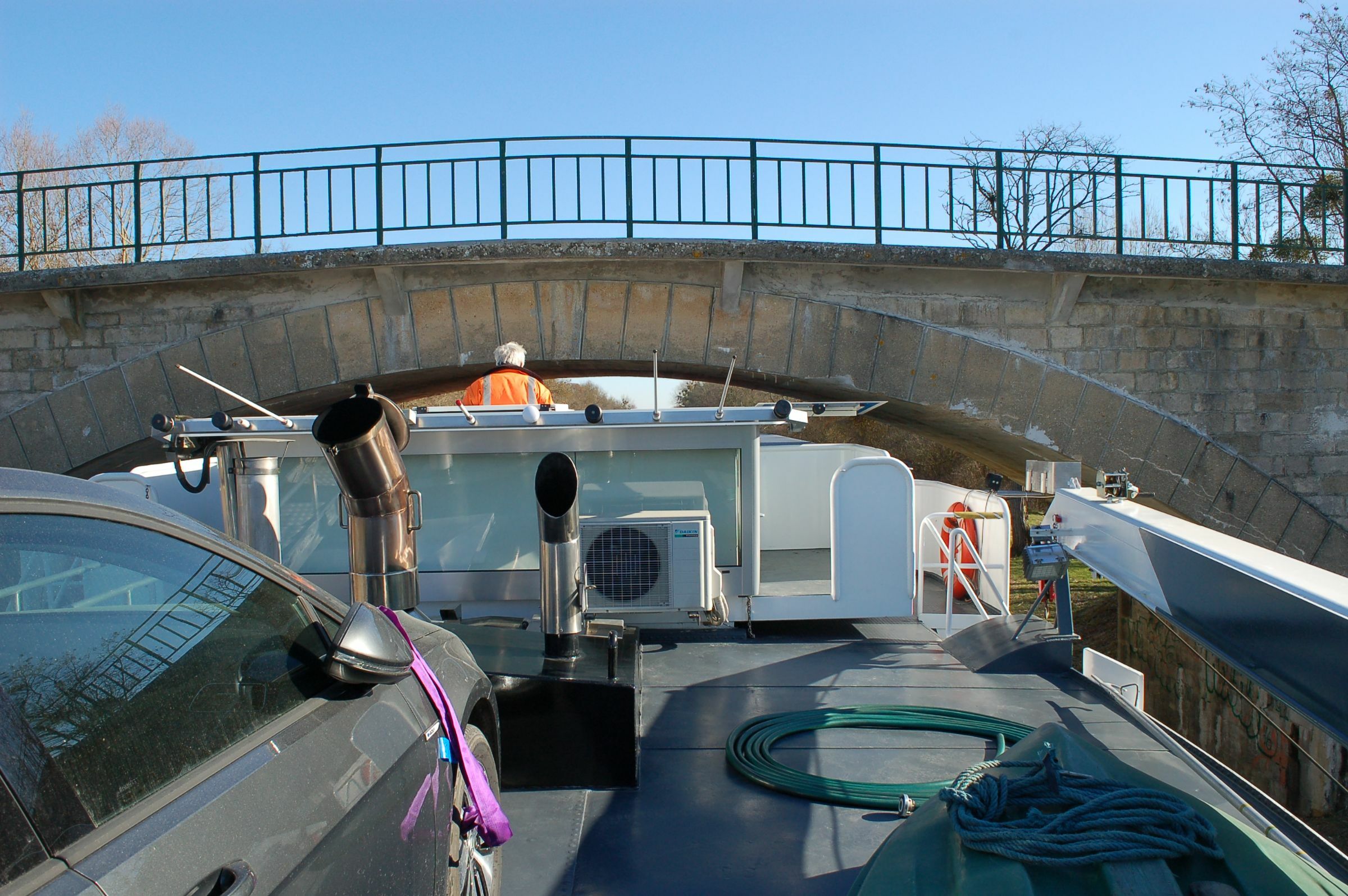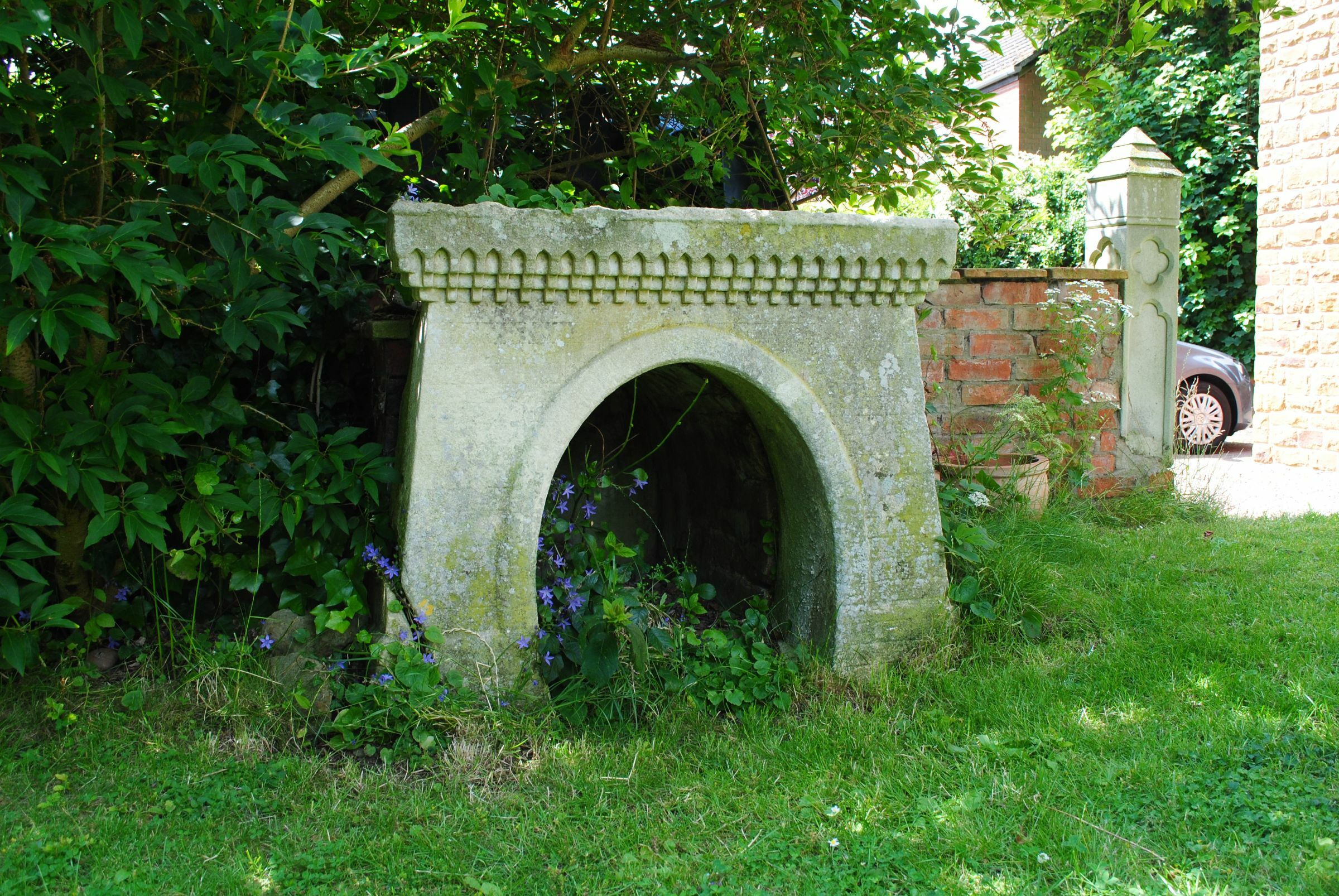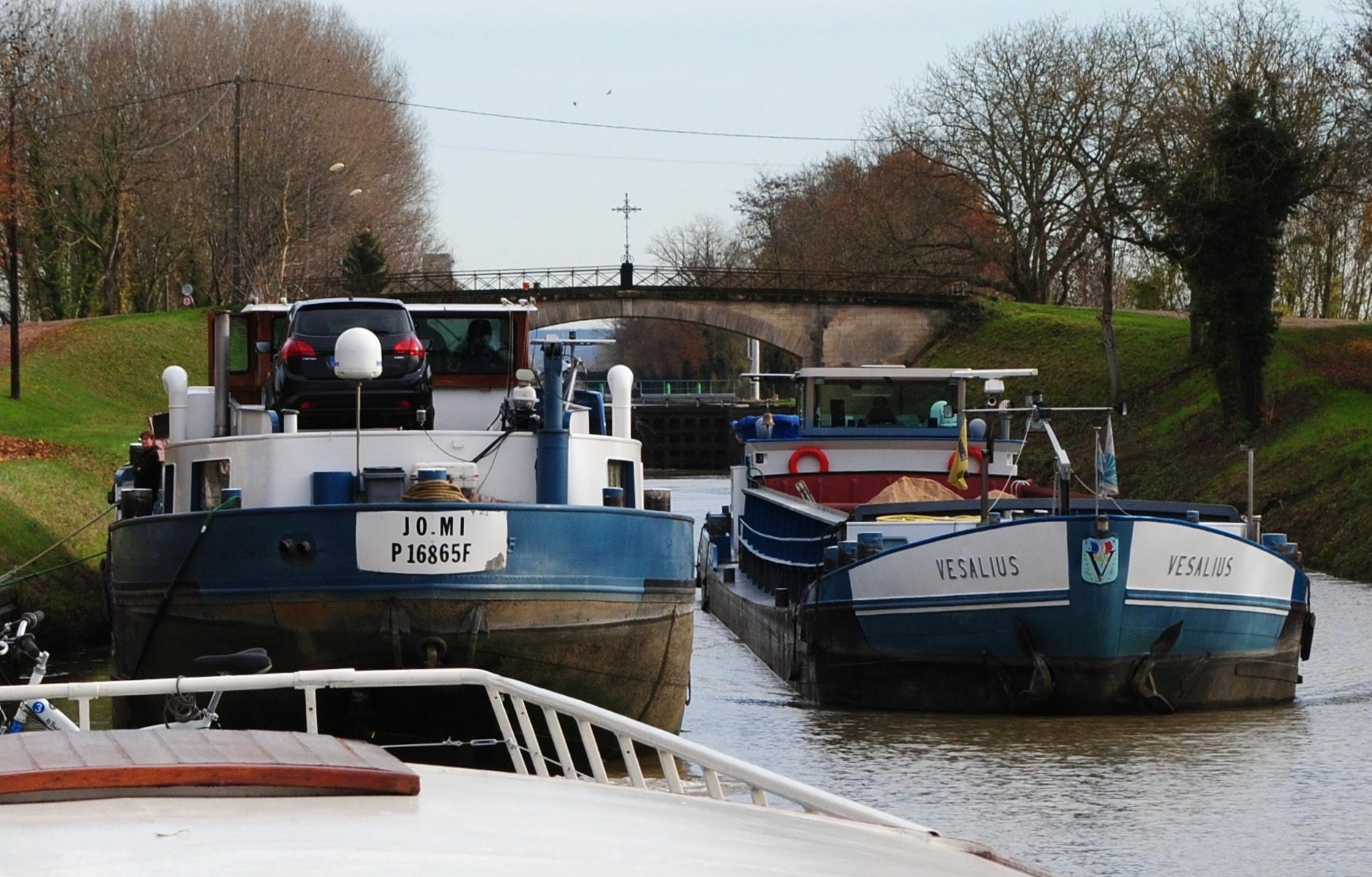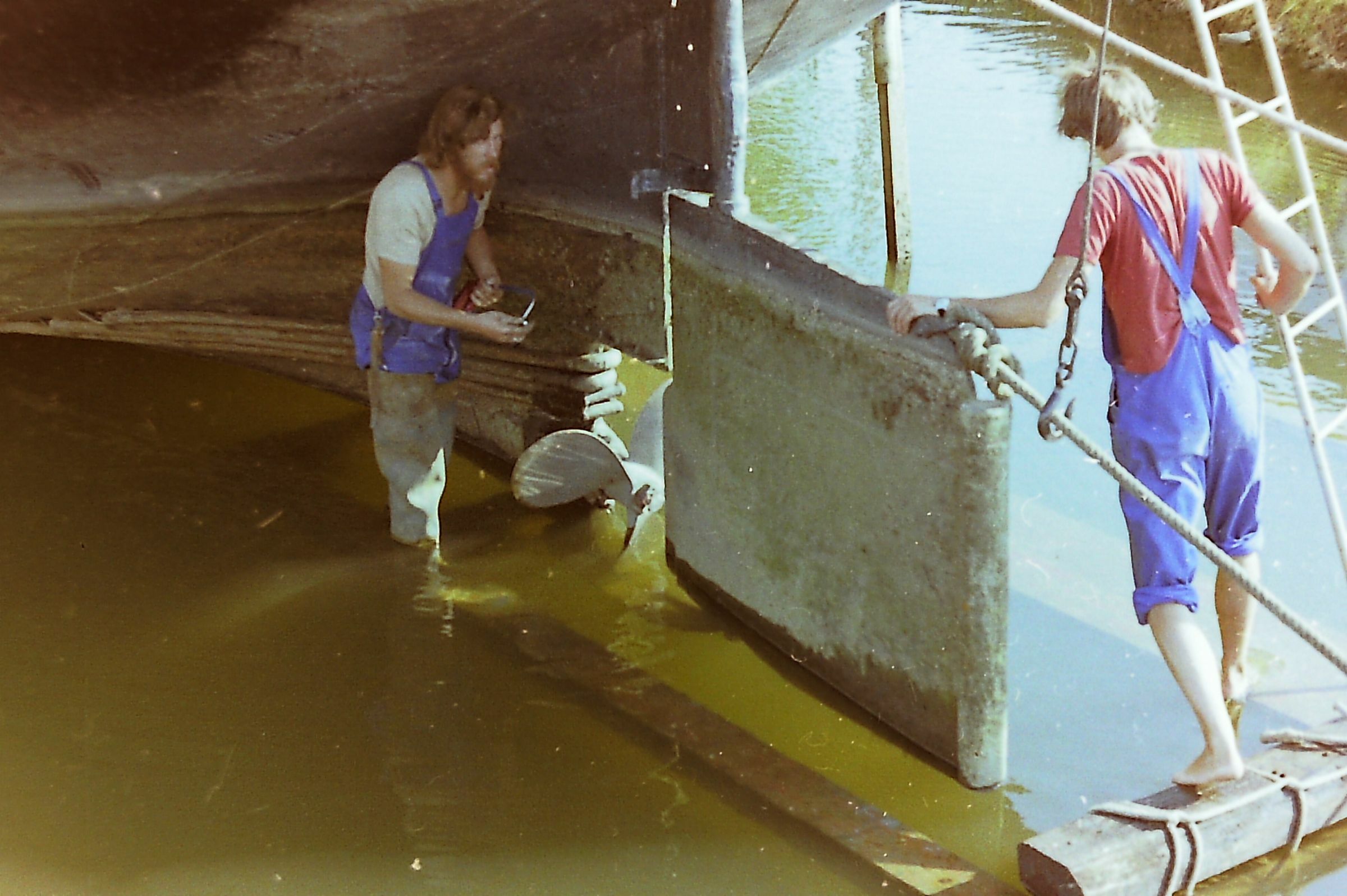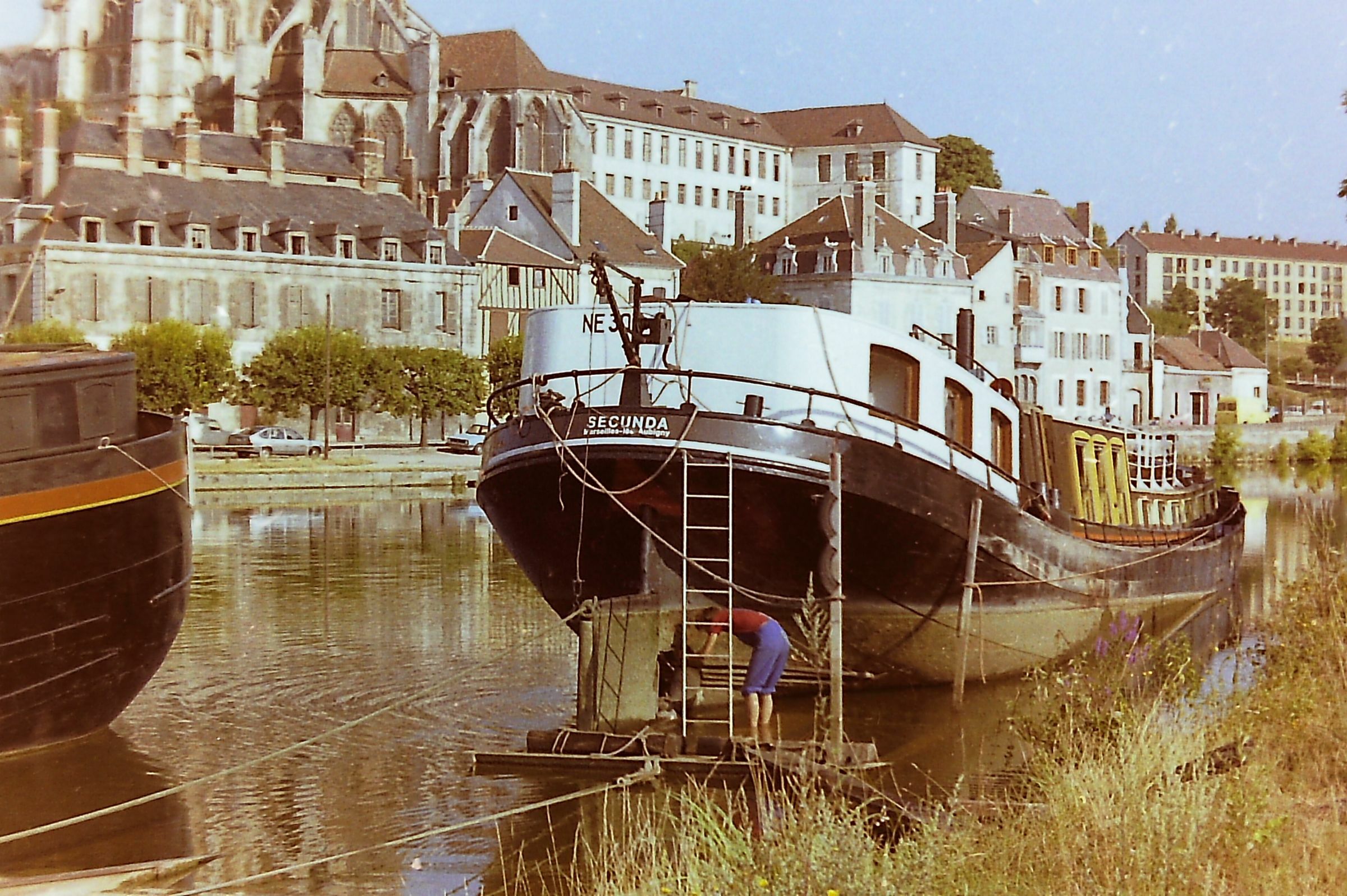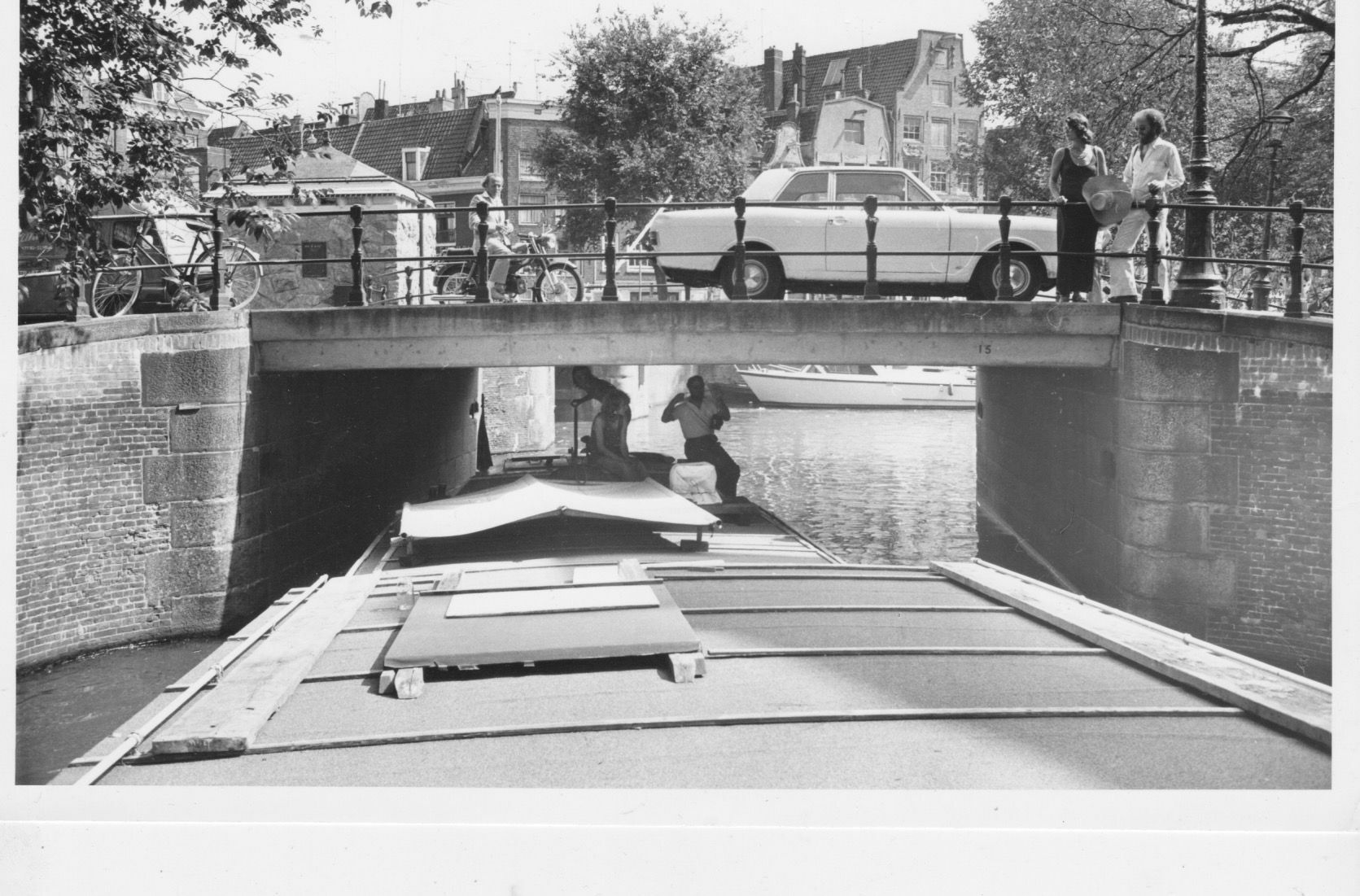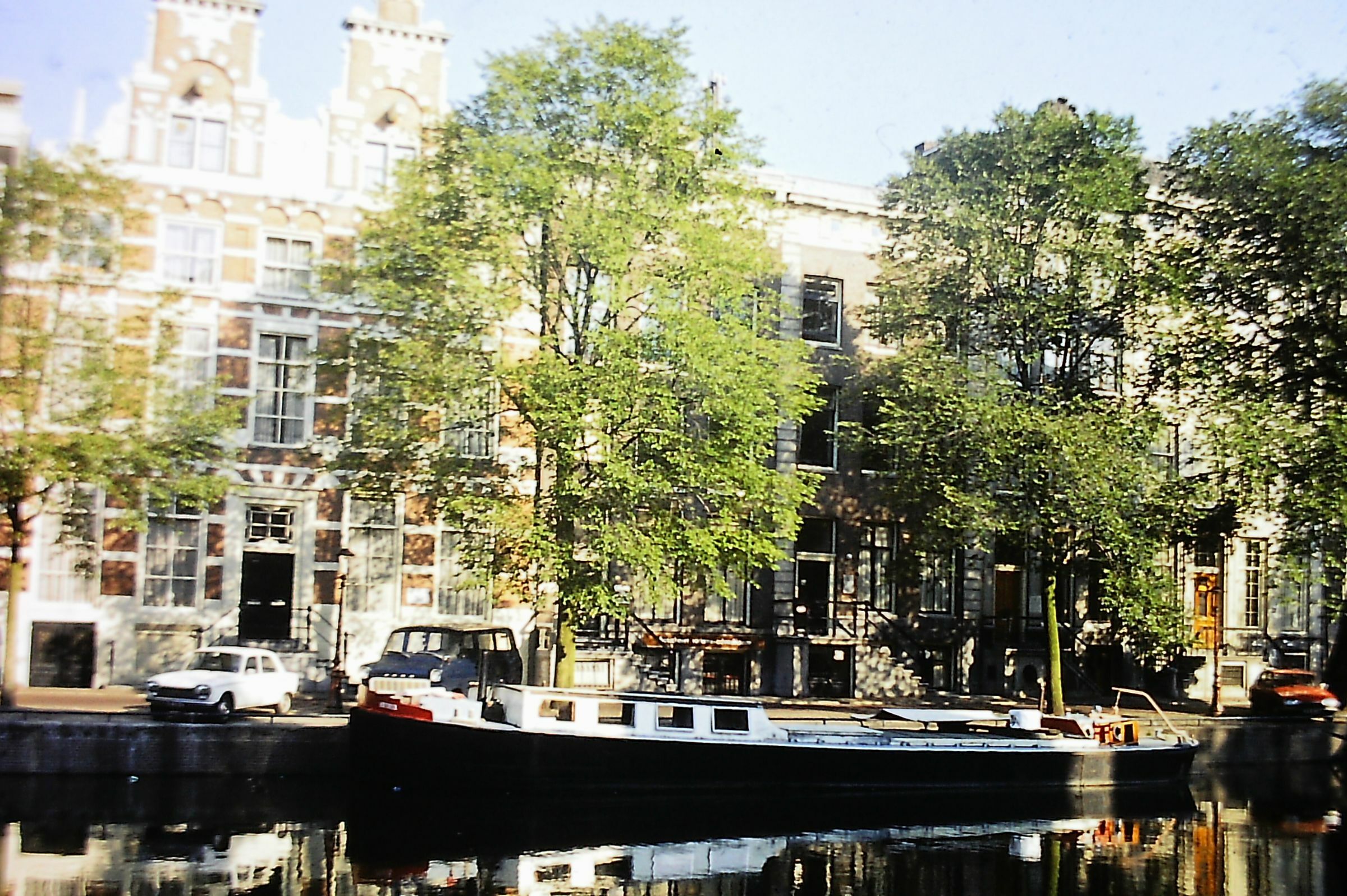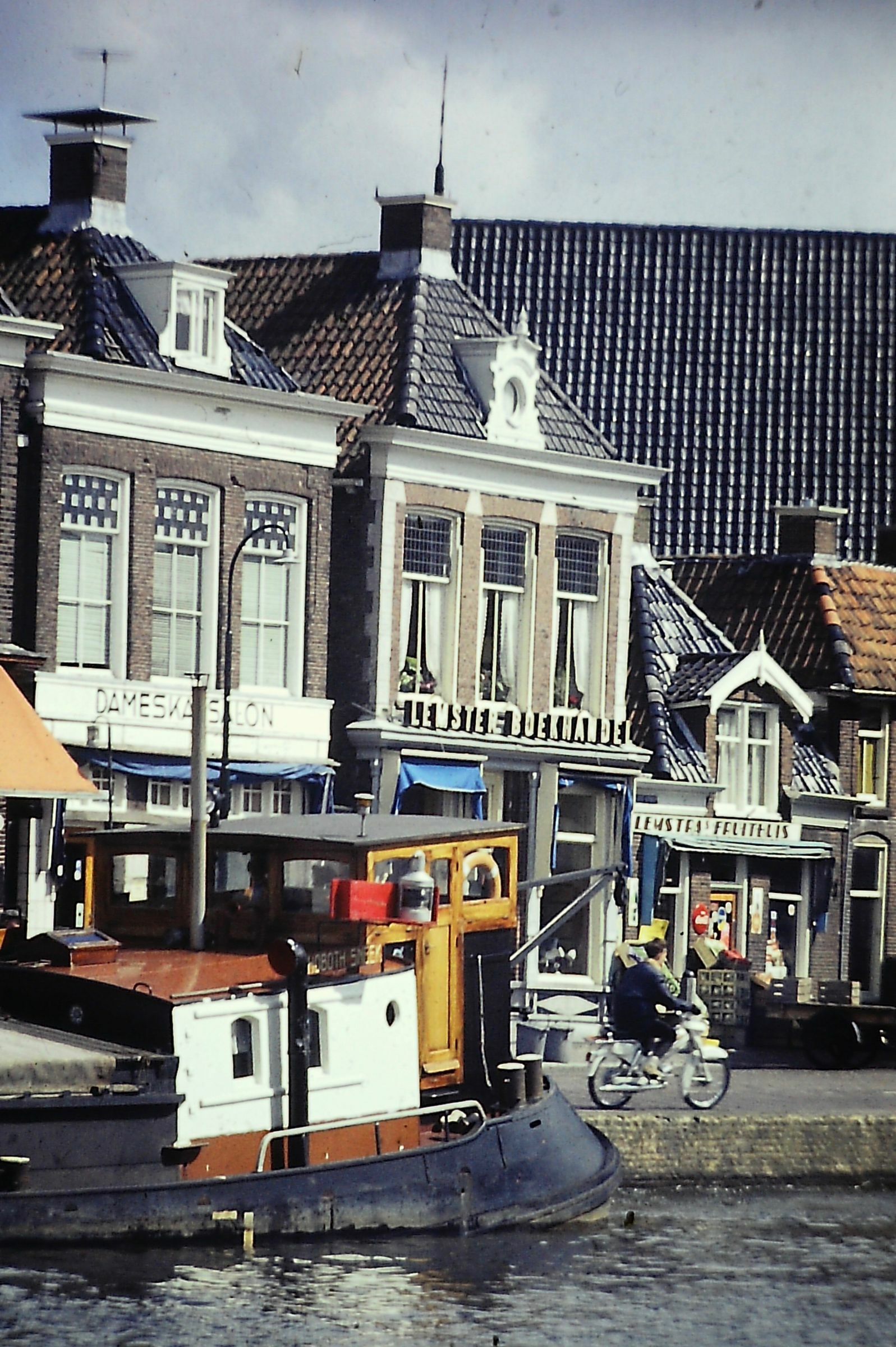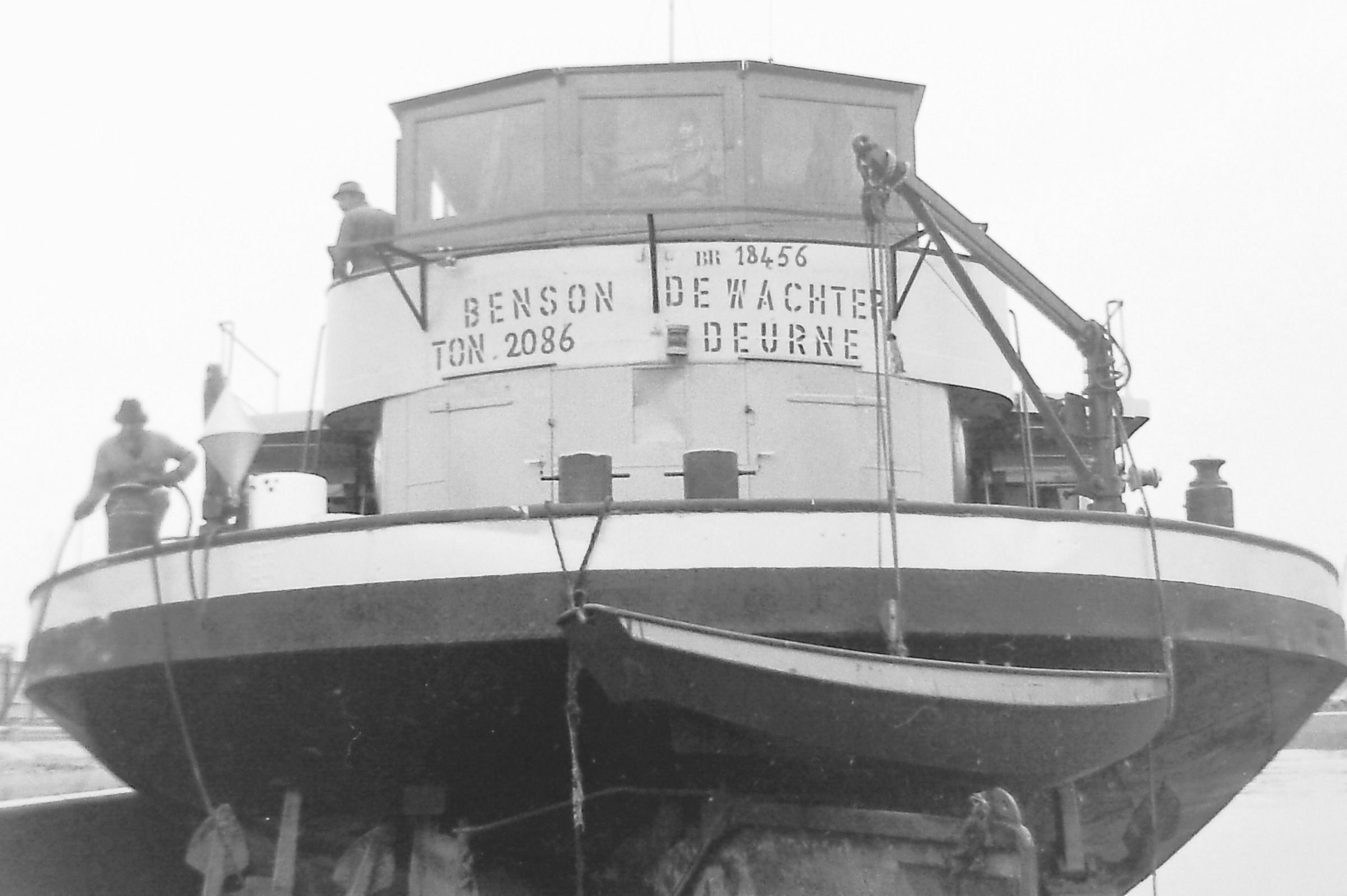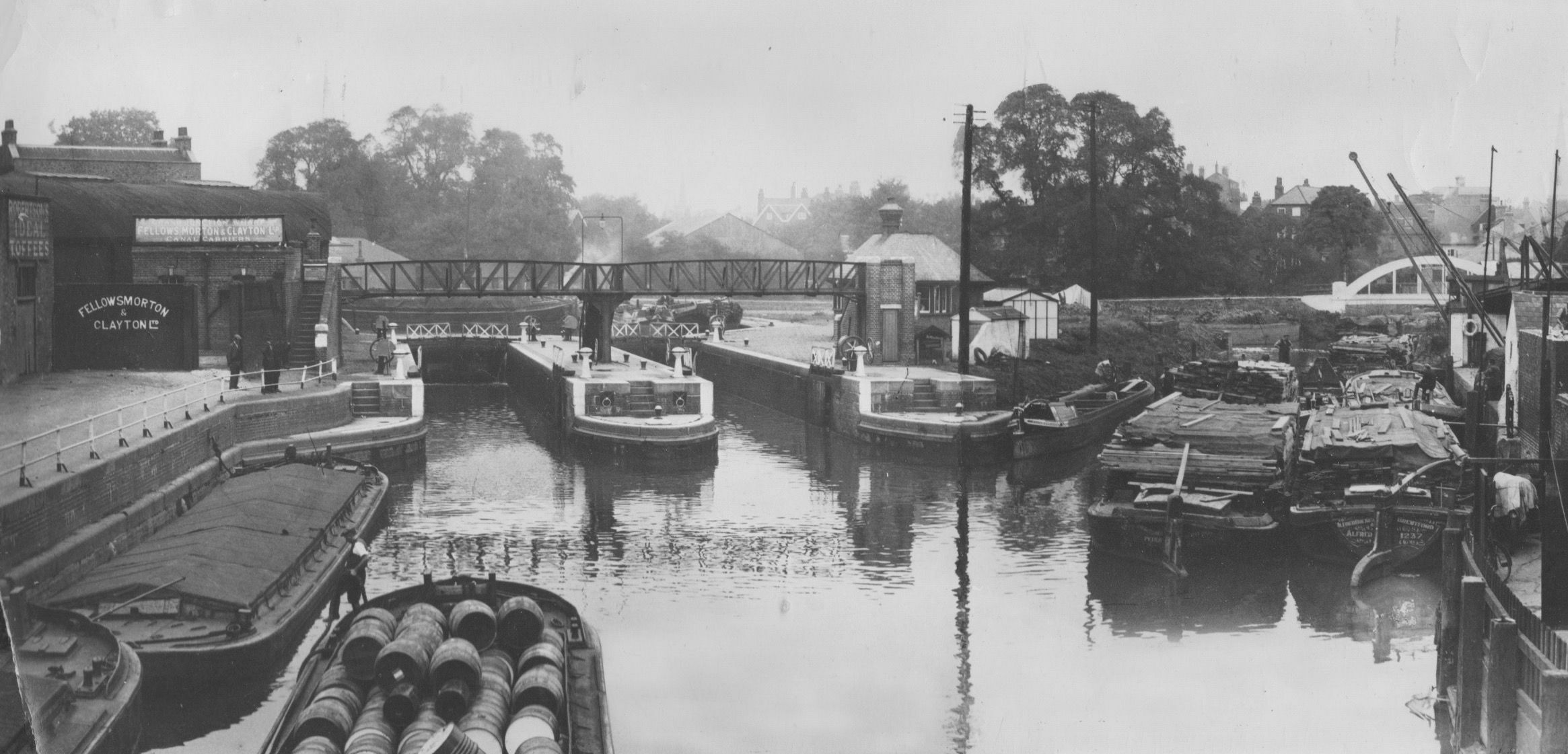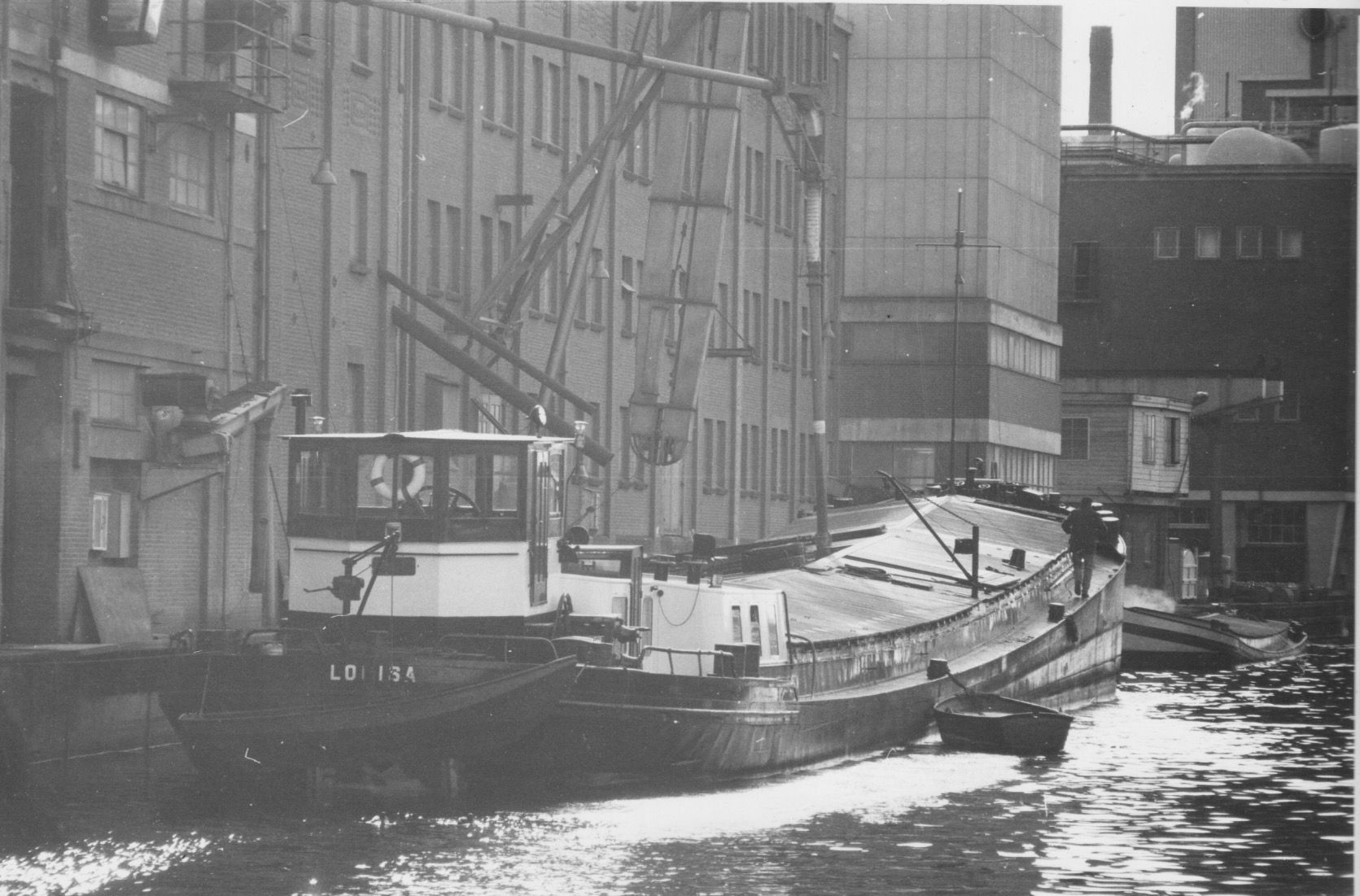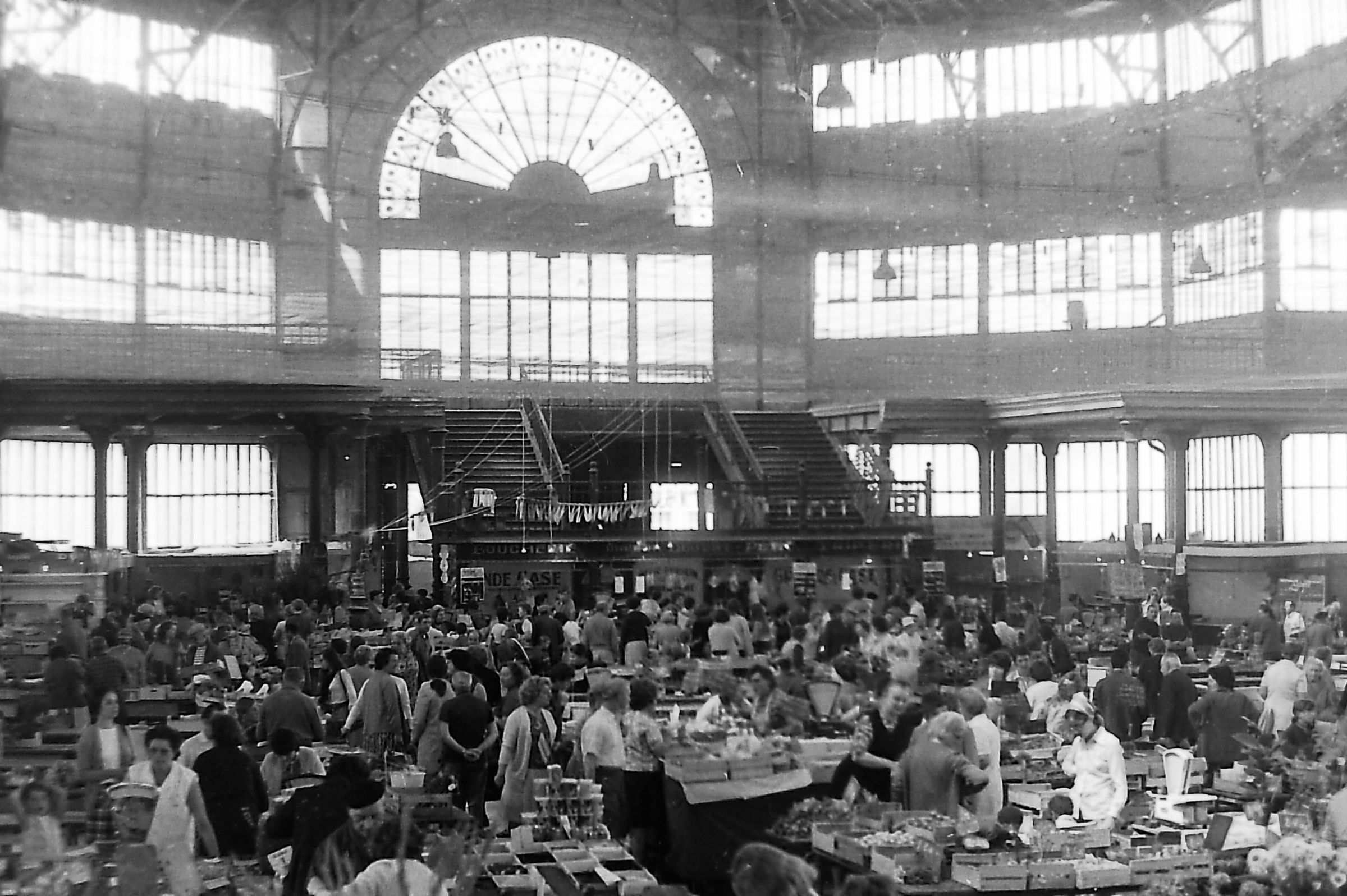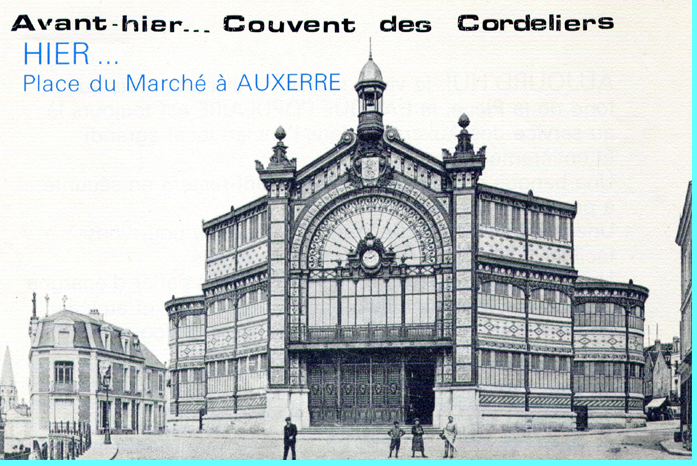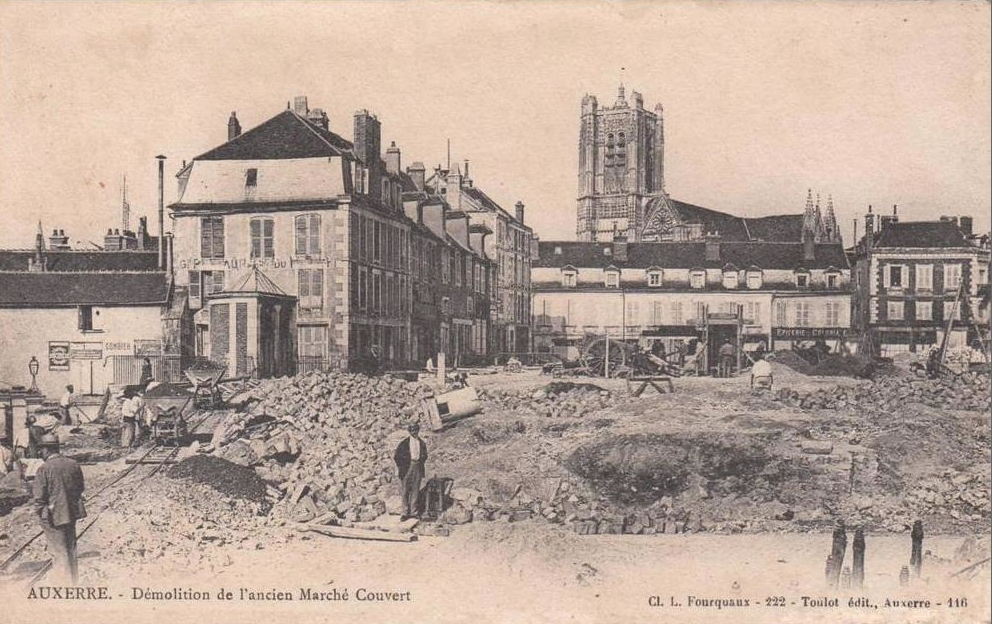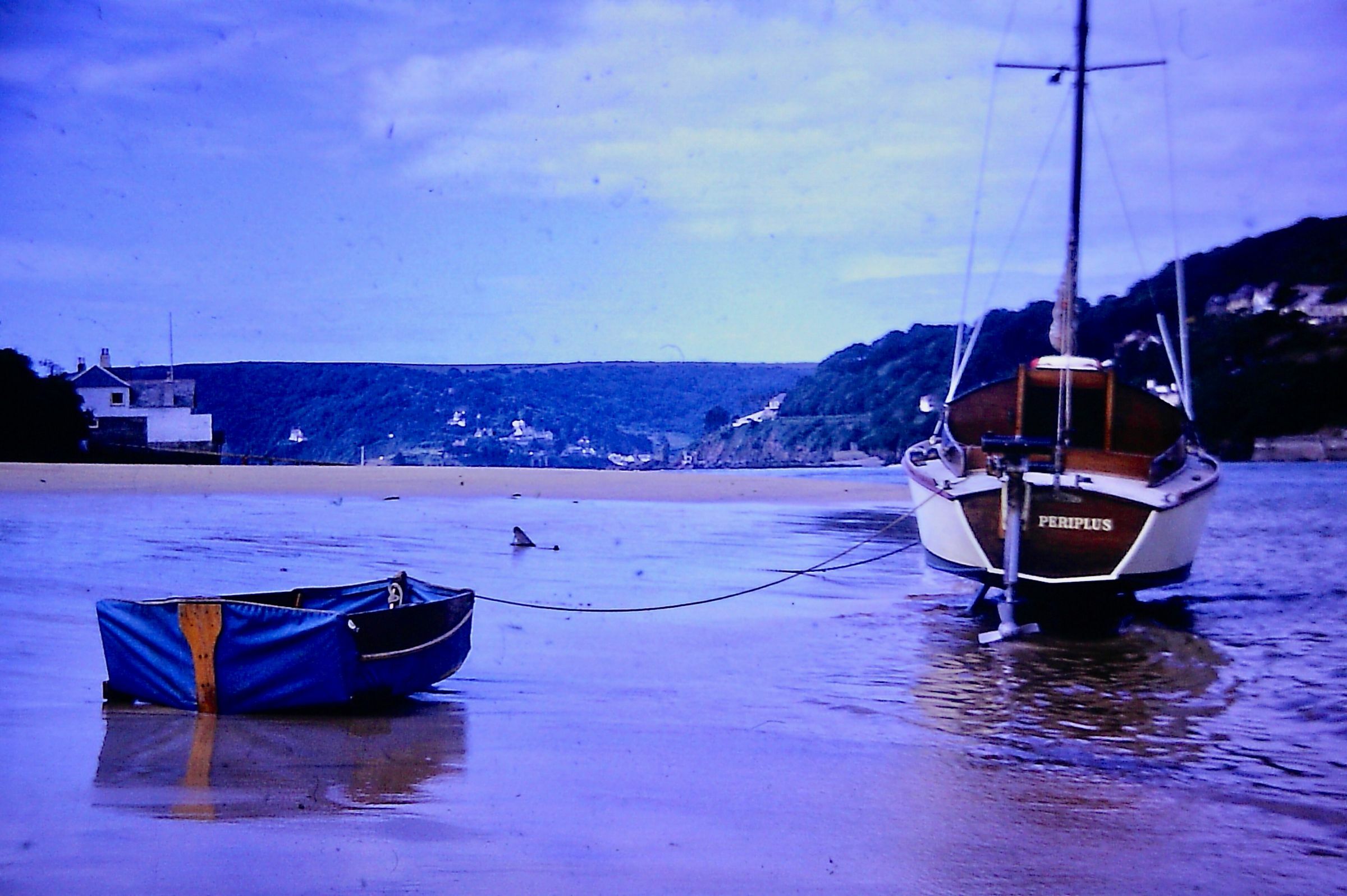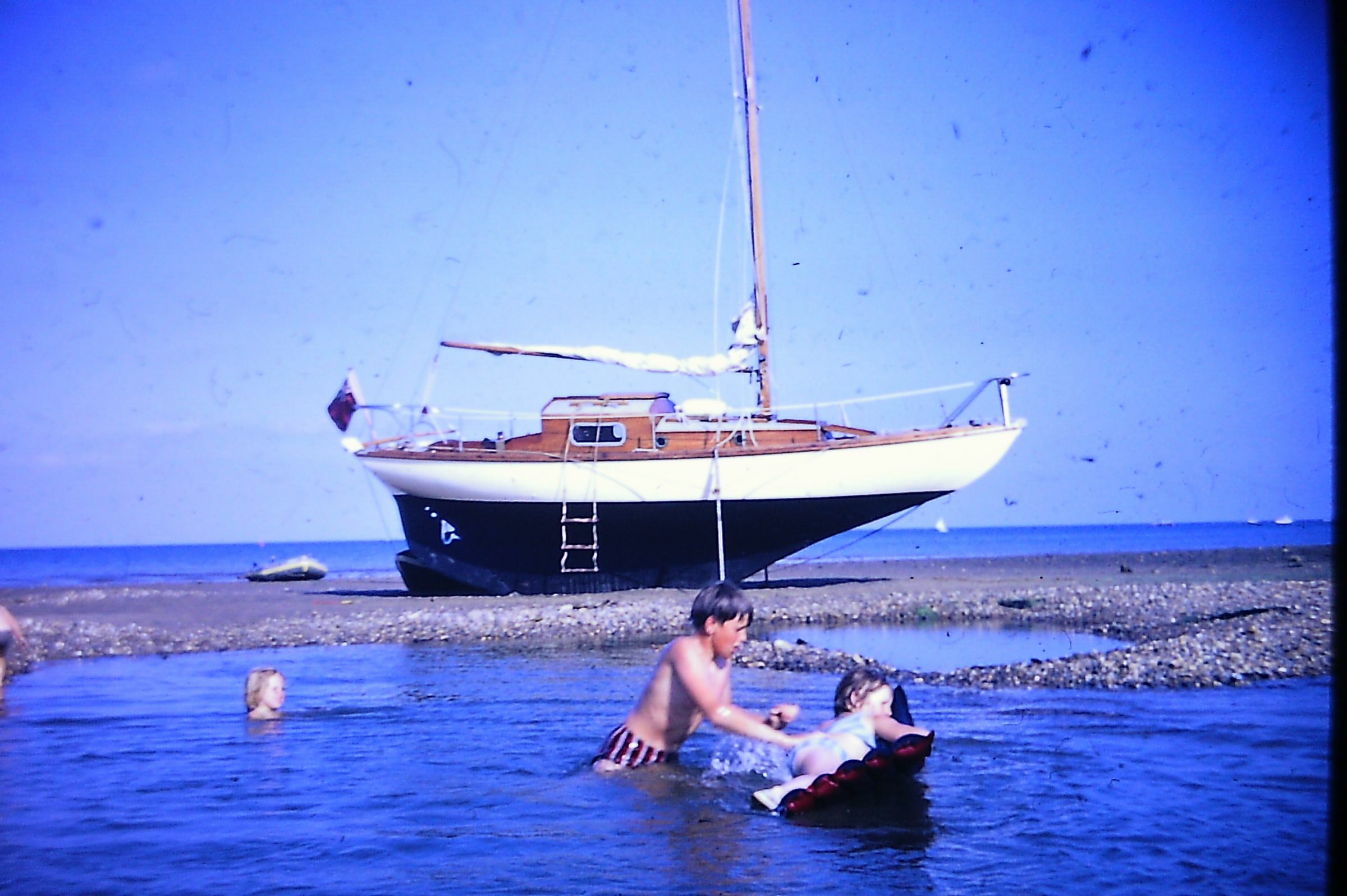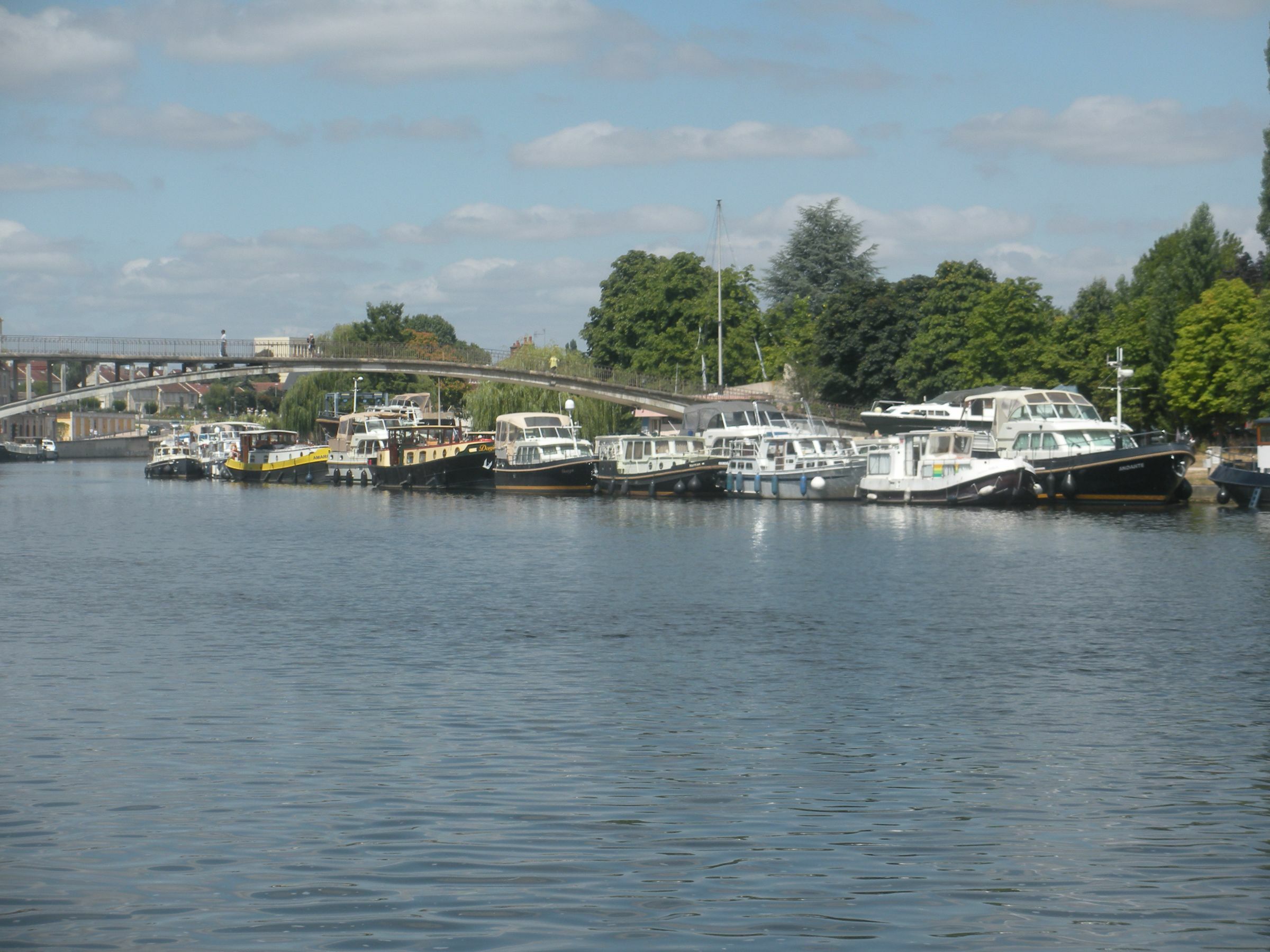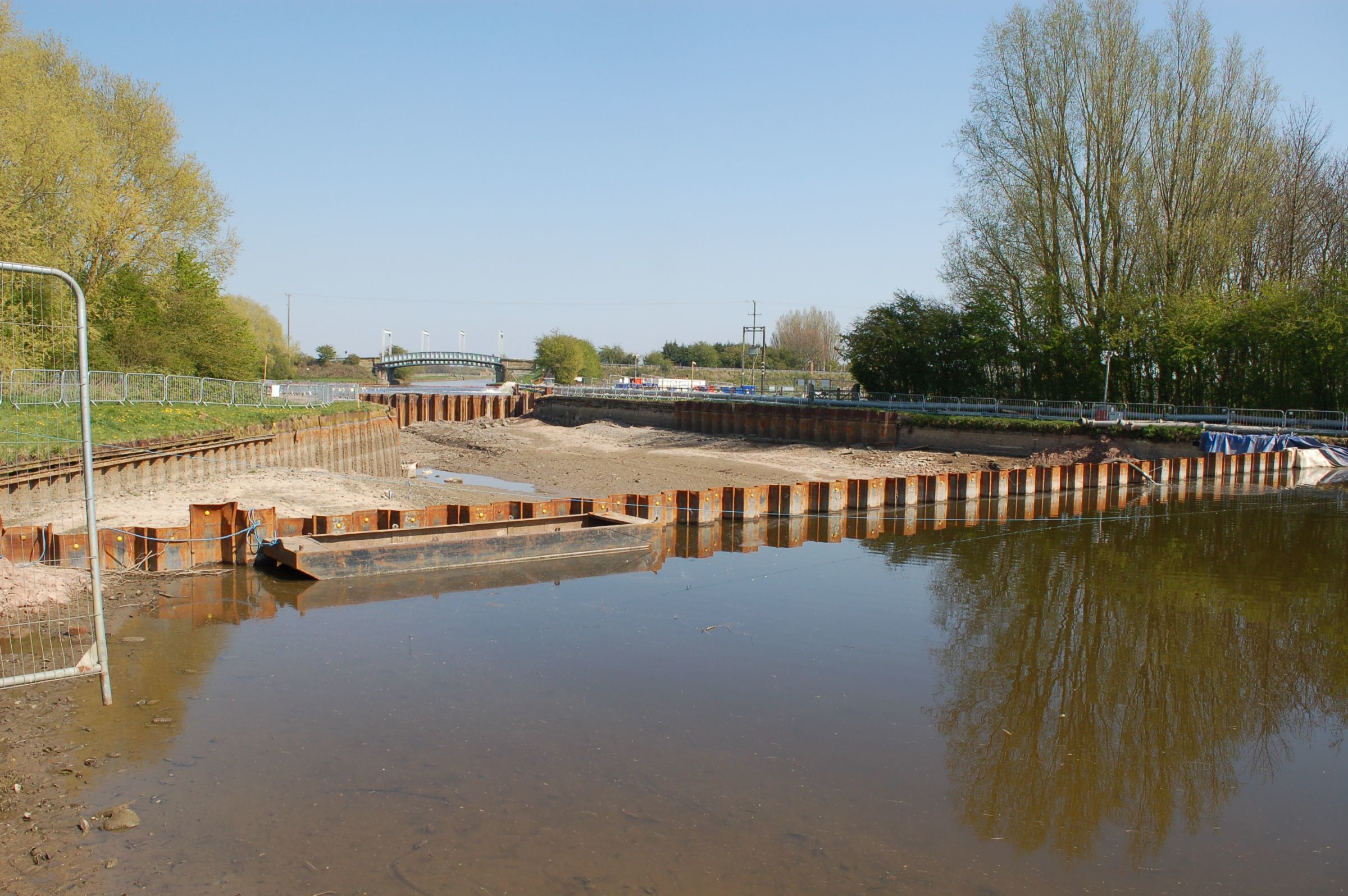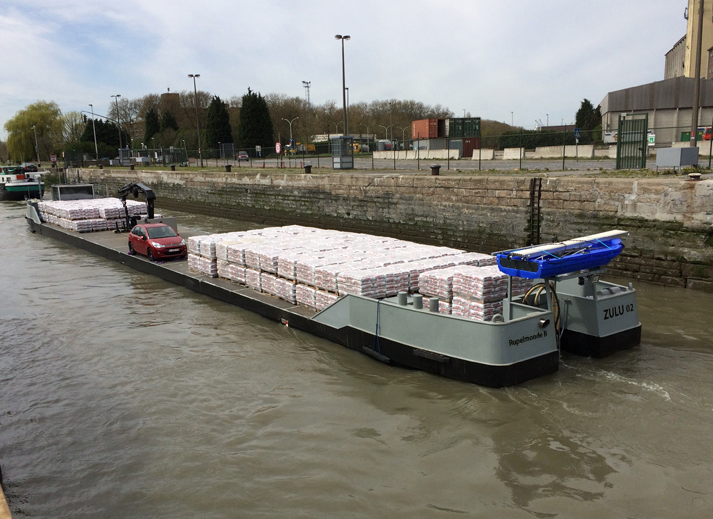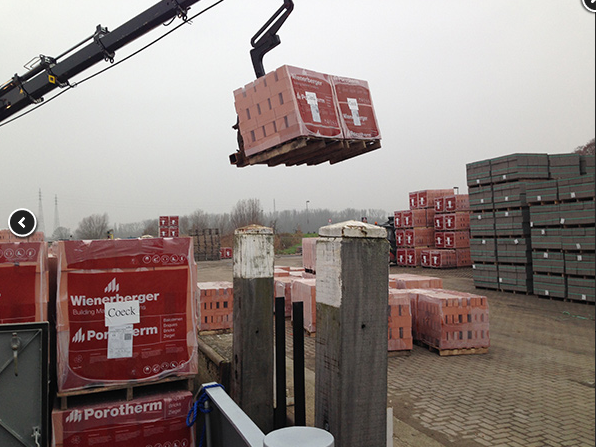-
Posts
319 -
Joined
-
Last visited
Content Type
Profiles
Forums
Events
Gallery
Blogs
Store
Everything posted by John Liley
-
The Marne - Rhine Canal recalled. Despite a reputation for fine food in Alsace, we did not draw lucky at the place pictured (Lutzelbourg, I think). Having looked at the menu the conversation ran something like "Is Horse the only thing you've got?" to be countered with great aplomb "It's the speciality of the house, Sir." With nowhere else to go we did, indeed tuck in.Putting animal prejudices aside, I have to confess I enjoyed it, though I have never eaten any since..
-
Keep out of the way if you meet one of these - whoever is steering may not be able to see you. The Dutch-built Eiger-Nordwand (Eiger North Wall) is propelled by Liquified Natural Gas, an ongoing trend on the Rhine and associated waterways. Somewhere under those containers is a storage tank for the LNG, presuably a large one, since filling stations are presently few and far between.
-
This is all that was left of the Renault car factory on an island downstream of Paris the last time we passed. Vehicles made here were transported to/from other plants on enormous double-decker barges, but no longer. The cars are being made elsewhere now. and the island will become a "cultural hub", hopefully a good one, whatever that may be.
-
These are the metric dimensions of my friend Leigh Wootton's barge in France. A tonnage of 1454 needs a draught of 2.72 metres, more than the old canal beside the upper Seine can handle. 1,000 tonnes is thus the present-day limit here. What got Leigh his present contact however is the ability to get the boat back with empty containers on board - thanks to this ballast tank, and one aft. Together they take 90 tonnes of water, enabling the vessel to get beneath the bridges with millimetres to spare (They sheared the head off a rivet once at the bridge before Nogent). Here they are on the way back to Nogent-sur-Seine. :
-
The prodigious Robert Stephenson, son of the famous George, and co-designer of the Rocket, built Kilsby Tunnel on the London & Birmingham Railway with considerable difficulty. A memento of his efforts is a model of the entrance he had constructed to hopefully inspire his foremen on the job. It lies in a garden in Kilsby cvillage, midway between Crick and the North Oxford Canal.
-
Fixing a leak in the keel cooling. With no drydock within many miles we had to use the slipway at Auxerre. The heavy load bent the end of the skeg upwards, locking solid the rudder. This we discovered when the boat floated off and I had to let her crash into a (fortunately) strong) metal boat with a handy rail to attach to,as an alternative to drifting down to the barrage. A friend then torched a bit of clearance higher up and it all worked again.
-
To reach the Canal du Nivernais from the south involves taking a short arm from the canal beside the upper Loire. From here it is a two kilometre voyage downstream to where the Nivernais canal begins. Going down through the lock into the Loire is straightforward enough. Coming the other way is A-level stuff, since the mother of all whirlpools waits at the entrance. A row of bollards on the shore invites an expert on the bow to lassoo these as you glide past, but I have never managed this myself. The alternative is a bellowed conversation to and fro, and it takes a very long time. The upper gates, however, have a certain splendour, once you are in.
-
Early sailing days. We started with a twin-keeled 18ft 6 in plywood sloop, my brother, myself and a friend sharing voyages between London, Ostende and the Scilly Isles. Later we moved to a Folkboat, that much harder to keep upright when the tide went out. The early folding dinghy was a deathtrap, happily replaced by an inflatable before any of us drowned. As i remember, these shots are at Salcombe and Bembridge I.o.W in the days before the word marina entered any of our lives.
-
Fenders, like traffic cones, must he good to have shares in. There are always plenty on view at the port in Auxerre. The design of every one of these boats has been thought about carefully, with the aim of being stylish, or racy, or, possibly, sexy. Yet they then spend their lives decked out like sausage stalls, even the barges amongst them. Very odd
-
I agree with much of what you say ( though I do not get the issues of water supply that you earlier quoted). I simply suggest that when possibilities of freight by water arise that they should be pressed. The Aire & Calder contract for washed sand presents just such an opportunity. To quote the late Robert Aickman, whom I knew, disliked on various grounds, but admired, nonetheless: "I abhor the concept of waterways being largely obsolete but fun to play about with. I believe it to be not only unworthy but unworkable." We move into emotional territory here, but, with the ongoing crisis in C&RT's finances, let alone the looming disaster of global warming, could he not be right? The Aire & Calder scheme presents a chance, by association, for our waterway system to gather purpose and thereby esteem. In terms of public perception it would help enormously if news of what goes on in the Netherlands, Belgium or France (by no means as far away as Mars) should be spread around by those of us who can. The Aire & Calder meanwhile, after it burst its bank late last year, was left piled off, for four whole months, before repairs even began. Scarcely a pinnacle of zest. I know what Robert Aickman would have said. Very publicly too. ,
-
Apologies for the belated follow-up - been away a few days. Surely the Aire & Calder escapes the lack-of-space argument? Or the problems of water supply? Here the primary trade in coal has gone, but an attempt is being made to sew the seeds of new industry. This will take traffic from our roads and add purpose and esteem to our waterway system that it currently lacks. If this works, other traffics could follow This needs to be encouraged and supported, to overcome the widespread British perception that water-transport is out-of-date. Here is a role for the Inland Waterways Association to fulfill - to tell people of such as the Zulu flat-bed barge system currently being developed in Belgium for pallet transportation, with a fork-lift facility on board. Just one example of a lesson from across the Channel. But who, outside of canal nuts like myself. knows of such a move? Currently a 70,000 tonne contract on the A & C hangs in the balance, given the state in which the waterway has been allowed to subside. Let us not think of reasons why it does not matter, after all.




